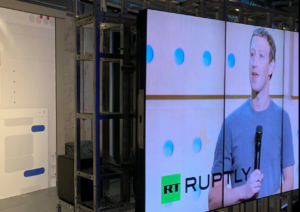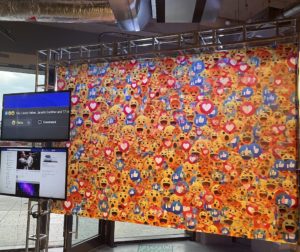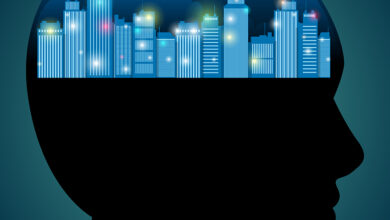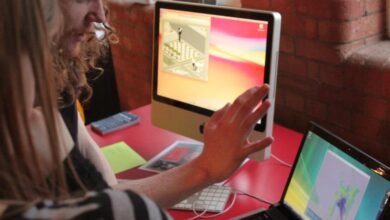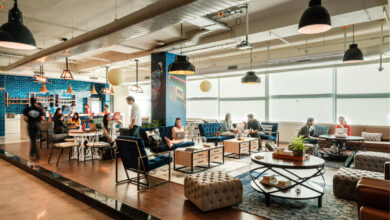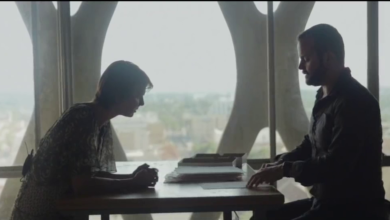
Wish you were here – Review of Ben Grosser’s new show ‘Software for Less’
Addicted to numbers? Frantically checking your sleep hours first thing in the morning or daily steps on iPhone? Checking hourly how many friends liked our holiday photo? We are all living in a Quantifed Self era, where even your cat’s nightly expeditions steps are quantified on TabCat app to make sure he stays fit.
It is clear that we love numbers but do they love us back? Is this exponential growth of numbers in our lives leading to happier humans?
These questions have been the focus of Ben Grosser’s critical tech artwork for over a decade. Back in 2012, this Illinois-based digital artist created an app called “Facebook Demetricator”, a web browser extension that hides Likes, Number of Friends, number of shares or comments.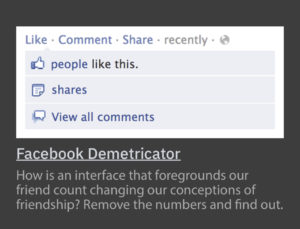
In Ben’s version of Facebook, a counter with “16 people like this” becomes “people like this” – a subtle but powerful difference.
The way Facebook or Instagram gives numbers as feedback for your every action is the child of hundreds of A/B tests that UX designers on Facebook run daily to find the best layout and optimal interface that makes you more addicted.
The aim is to make us all come back more often and post more often. Numbers are the way they catch our attention and trigger our brains into following addition. Those Valley boys have jobs that UX people call ‘Web Complicators”. It is Design for Worse, UX for addition, to steal your time, bamboozle to monetize your life, sell your emotions and your opinions.
The centrepiece of the new exhibition by Ben Grosser “Software for Less” in “AreBytes Gallery” (India Docks, London, August -October 2021), is a mirror piece of 2 videos on large screens.
The first video is edited from all utterances of “More” or “Growth” that Mark Zuckerberg expressed on videos since 2012. The full 47 minutes of it, used by Mark since he was 19 to the age of 34, illustrated his hyper focus on investors’ key metrics.
On the opposite wall there is a mirror piece, a video composed of all his utterrances of “Less”, from the same period. The video is just 60 seconds long.
While this is remarkable, it is no surprise that the poster boy for Sillicon Valley reflects the cult of growth at all cost, of the sort that aims to “break things and apologise later” as used by Uber, AirBnB or Amazon.
During the visit to Ben’s show, we noted that one issue with Facebook numbers is the effect on our pre-Covid obsession with travel.
In the olden days, pre-Facebook, you were lucky to get a holiday postcard or two from an auntie or a bored friend, who found themselves with nothing to do in a café in San Sebastian on a rainy day.
“I wish you were here” on a few postcards stuck on the office board were all you were going to get as inspiration, postcards being quite an effort to post, with the stamps and their mysterious unavailability in most holiday spots.
Facebook and Instagram changed it all. As our use of smart phones with cameras grew since 2005, and costs of digital storage dropped, social media platforms became the drivers of massive increase of people racking up the airmiles at breakneck pace in an effort to keep upwith “friends” on FB that were posting from countless exotic places.
By 2019, an average Facebook user was getting dozens of e-postcards per week through a photo sharing tool on FB, where one postcard/image shared by one click from a smart phone would reach all your friends and family in a second – easy for the posting person, but giving a FOMO on steroids for those on the receiving end.
Fomo from the office postcards has morphed into Hyper Fomo from Facebook, propelling us to run to the nearest airport to buy tickets to random places that we had lodged in our heads from being fed them thru Facebook thru the use of numbers. 50 people liked a remote beach in Puglia? Must check it out!
Alas, it is not just all sun, fun and running with the bulls in Spain. There is a price to pay.
Our individual carbon footprint has gone up exponentially reflecting our Facebook-led hunger for travel to all those places where our “friends” (or at least people who we share friends with) have already been.
It is the numbers, stupid!
Seeing the Demetricator on FB reveals that that photos from other lucky people who travel are nice, but photos alone are not triggering the rush to the airport if they had no number of Likes or Comments. It is the numbers that trigger our atavistic need to copy/follow what our peers do – see Rene Girards on Mimetic Theory
If you like Facebook to keep in touch with real friends and family, use Demetricator to hide the numbers of Likes. It offers experience of connecting – but without your head making you run to the airport and driving up your carbon emissions.
In the third art piece in Ben’s exhibition, titled “Minus”, you are invited to imagine the world where social media messages cost a lot of money/resources and you can only ever send 100 messages in your lifetime.
That is it, no more, scarcity is everything, just like with bitcoins mining philosophy where there is a strict limit on how many coins can be mined.
It remined me with our early Cybercafe Cyberia experiences in September 1994, just after we opened, when early users would ask nervously “if it is ok to send more than one email?”.
We had a good set up and the volume was not a limitation, but people had this sense of email being probably expensive as it was instant, getting to the recipient in seconds, which felt like a luxury service, compared with normal snail mail that would take weeks to get to even mainland Europe, or even longer to US or Asia.
It is a source of regret to me that we did not build on that sense of ‘premium product’ that early users had. We should have argued for making the Internet Service Providers like Easynet or Demon to charge 10p for each email! Not to make money but to set up the mindset that email and electronic messaging costs energy to send and store.
The archives sit on servers for years – that means we have to use mostly extractive sources of energy for electricity for archiving them for years to come.
“Free” is the mother of all excesses and so the email has gone from a few a day back in mid 90ties to average 50 – 80 a day, not counting the ones you are cc on, group emails or Promotional emails.
Free email meant digital marketing nirvana, but opening rates dropped from 100% (the excitement of ‘You got Mail” sound and a rush to open each new message) to less than 5% today, as users try to hack thru their Inbox folder with a filter machete to avoid being overwhelmed.
This principle of Free messages has been carried out to Social Media platform, creating this excess and avalance of content. More recently, Instagram changed the algorithm for a preference for 1 post per day, to make the experience more manageable for the users. Too little too late?
“Minus” artwork reminds us that nothing is free online. Carbon emissions are us, cyberspace runs on coal. All those emails, messaging and videos will be archived on millions of servers powered by coal somewhere in Oregon (over 2.5million servers owned by Google), Virginia (Amazon) or Germany (T-Mobile). For all the sustainablity posturing from your Internet Cloud providers, data centres account for more than the entire airline industry during pre-Covid peak.
Less than 4% of your holiday and cat photos sit on servers powered by renewable energy like hydro, solar or wind. As Google admits, there are plenty of places where there is no solar or wind to be harnessed, so it has to be gas and coal for now. We need to admit our addiction to cyberspace means use of fossile fuels, mounting our ecological debt exponentially on daily bases, one TikTok wap dance challenge at a time.
There is a lot more food for thought in Ben’s show “Software For Less”, so do visit AreBytes gallery (Canning Town 10m or East India Dock DLR, London) and try FB Demetricator. If the Earth’s climate could only support 100 of your photos or messages shared in your lifetime, what would you share?
References
Software for Less – solo show by Ben Grosser
AreByte Gallery, East India Docks, Botanics Square, E14, till 23rd October
Artist: https://bengrosser.com/
Gallery: https://www.arebyte.com/aos-programme
For background: “Quantified Self “ by Dr Phoebe Moore
Renewable energy datacenters Hydro66

